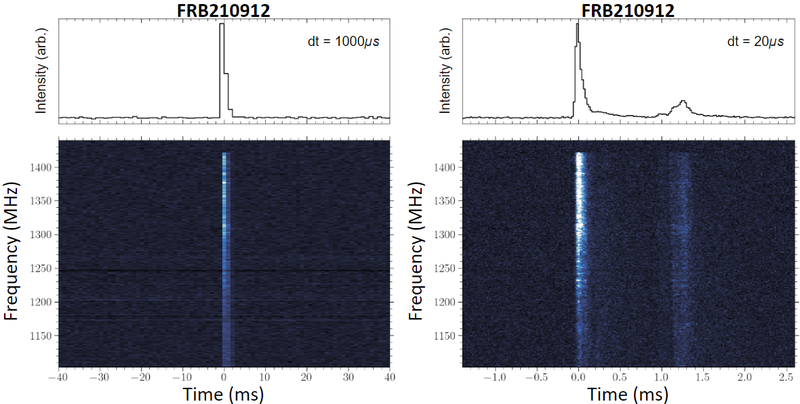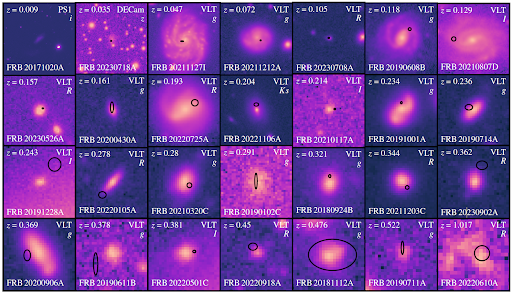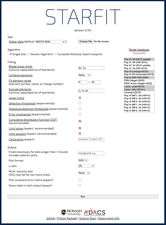Fast radio bursts (FRBs) are extremely luminous radio signals occurring on millisecond timescales from as-yet unknown sources at cosmological distances. The field is young and the potential for scientific discovery is substantial. A key outstanding question relates to what creates FRBs (Cordes et al. 2019) and whether there are multiple progenitors. Additionally, given their extragalactic origins, FRBs can be used to study the intergalactic medium e.g. locating the missing baryons in the Universe (Macquart et al. 2020) and placing constraints on cosmological parameters such as the Hubble Constant (James et al. 2022). In all cases, precise localisation, which enables host galaxy association, and detailed studies of the burst at high time and frequency resolution are crucial. To best reveal their origin and expand on the above studies, we need to identify the host galaxies of FRBs through localisation of their radio signal to sub-arcsecond precision.
The study of FRB environments is a main aim of the Commensal Real-time ASKAP Fast Transients (CRAFT), one of the major science surveys with the ASKAP telescope (Deboer et al. 2009). ASKAP is ideal for both detecting FRBs with its relatively large field of view (30 square degrees) for a radio telescope interferometer, and being able to localise FRBs to sub-arcsecond precision, which can even enable localisation to specific parts of the host galaxy. To date CRAFT has localised ~30 galaxies to such precision through the CELEBI pipeline. This sample of localised FRBs enabled preliminary studies on the host galaxies and hence FRB environment, allowing us to understand the possible mechanisms behind FRBs (e.g. Bhandari et al. 2022).
The project here initially aimed to increase the optimisation of the CELEBI pipeline, but the focus shifted in light of recent changes to the OzSTAR architecture. A new system would be required to ensure CELEBI would be able to continue to function on OzSTAR. Software containers were successfully built for CELEBI, with ongoing adjustments made afterwards in getting CELEBI running within the software container framework on OzSTAR, allowing for a solid base to improve on optimisation of the performance of CELEBI moving forward.
CELEBI is a crucial part of the CRAFT project, especially moving forward. The CRAFT COherent (CRACO) upgrade currently under commissioning will enable a coherent search mode, significantly increasing the sensitivity of our FRB search. Hence, corresponding detection and localisation rates of FRBs through CRAFT is set to increase from ~1 every 2 months to ~3 every week (i.e. 100s of well-localised FRBs a year). Publications using the existing sample include two in Nature, two in Nature Astronomy, and three in Science. The CRAFT team has also won the AAAS Newcomb Cleveland Prize (2020).




